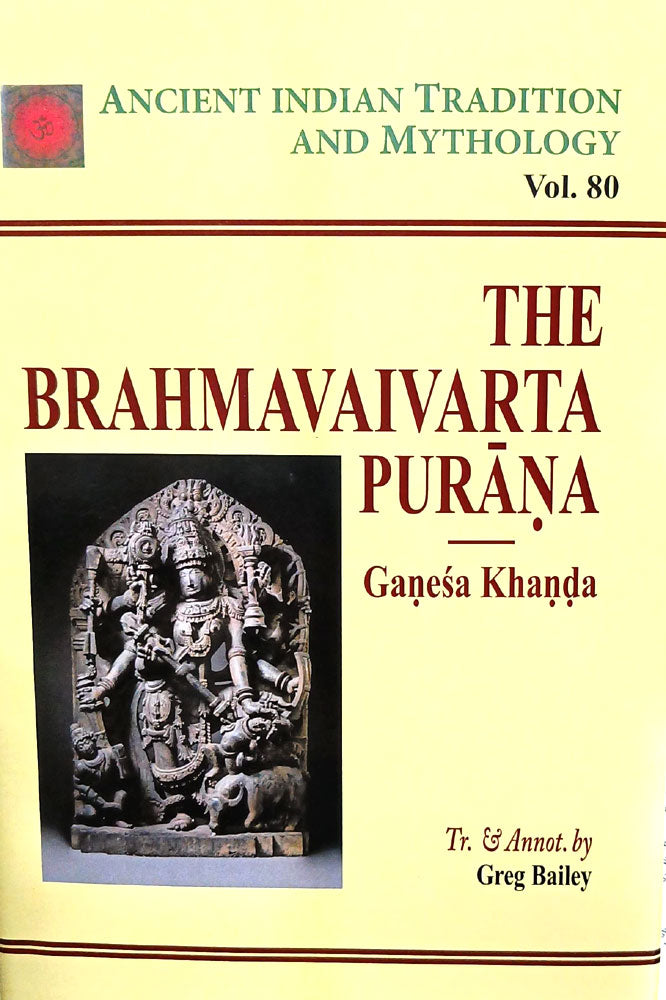The Brahmavaivarta Purana: Ganesa Khanda (AITM Vol. 80): Ancient Indian Tradition And Mythology (Vol. 80)
The Brahmavaivarta Purana: Ganesa Khanda (AITM Vol. 80): Ancient Indian Tradition And Mythology (Vol. 80) is backordered and will ship as soon as it is back in stock.
Couldn't load pickup availability
The first two khaas of the Brahmavaivarta Puraa (BvP) deal with Brahma and Prakti respectively. Both introducing the theology that enables Ka to be treated as identical with the supreme Brahma, and as Viu/ Narayaa in all his forms. Ultimately everything goes back to Ka as the source of power and being even including the mother goddesses who are so prolific in the text, not just in its second khaa. The fourth and final khaa treats the mythology of Ka himself, with focus on his birth, and just before this comes the Gaapatikhaa (GKh).
GKh is one of the few mahapuraas that includes a separate khaa about Gaesa, with the exceptions being the two Gaapatya Puraas the Gaesa and Mudgala Puraas-and the Vinayakamahatmya of the Skanda Puraa. When one reads the other three khaas of the Puraa, it is clearly evident that the GKh fits in perfectly with the principal themes of the entire Puraa, all associated with Ka in his various manifestations and the theology of the mother goddess, especially Radha and Durga. In addition, it continues the practice in many of its chapter of expositing the application of kavacas, dhyanas, mantras and stotras, to the extent that the text is almost a handbook of devotional ritual.
What is striking about the GKh is that it is only incidentally about Gaesa. Only less than ten percent of the entire text deals directly with Gaesa. It touches tangentially on his birth, the loss of his head and the gaining of an elephant head, his status as first to be worshipped in all pujas, his loss of one of his tasks at the hands of parasurama, and his cursing of the Tulasi Plant.
The second half of the GKh is essentially a version of the Parasurama myth. This begins with the intention to tell as well-known episode about Gaesa reflected in his common name Ekadanta. This certainly offers a unique interpretation of its, focusing as it does on the morality of patricide and regicide, and relations between boys and their mothers.
Ka is treated in a manner that can only be called theological. Theologically it is simply stating that all power is located in Viu/ Ka, but in this khaa it is seemingly extended much more than elsewhere. In addition, he is usually depicted as located in Goloka and Vdavana, with the bucolic ka receiving most emphasis in the next. The sakti teachings in this text blend constantly with the Kaite teachings, to the point that both seem to empower each other. That ka looms large is hardly a surprise given the BvP is substantially a Kaite Puraa of 14th – 15th century Bengal and then it could not have omitted existing material on the sakti, given the importance of other goddess worship in Bengal.
There have been two previous translations of the Brahmavaivarta Puraa. The present translation is a fresh translation but the translator has subsequently compared it with the earlier translations to remain transparent to the Sanskrit itself.
-
Pages
-
Size
-
Condition
-
Language
-
Weight (kg)
-
Publication Year
-
Country of Origin
-
Territorial Rights
-
Reading Age
-
HSN Code
-
Publisher




